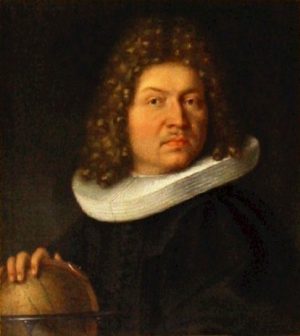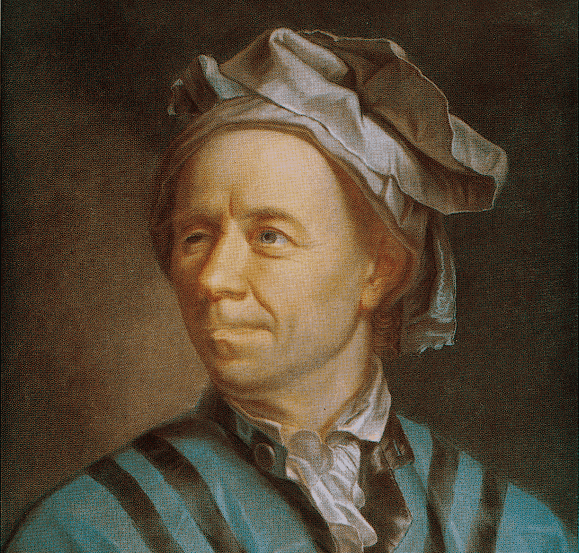Euler’s Number, written as , is probably the second most famous mathematical constant after Pi. But what is Euler’s Number, and how do we calculate it? In fact, why has e become so famous, and why does it deserve a place on our calculators and in the mathematical constant hall of fame?
What is Euler’s Number (e) and where did it come from?
Euler’s number has a value of 2.718… , however just like Pi, it is an irrational number, meaning that it cannot be written as a fraction and that it has a decimal expansion which will continue forever without repetition. Euler’s number e has become famous for two main reasons: firstly, it is used in lots of important real-life situations, and secondly it has many interesting mathematical properties. This makes a fascinating and useful number for scientists, engineers, and mathematicians alike.
Euler’s Number e and Compound Interest
Euler’s Number was first discovered by Jacob Bernoulli in the 17th Century when he studied the problem of Compound Interest.
Imagine you have £1 and that you get interest twice a year at a rate of 50%.
At the end of the year you would end up with £1 £
= £2.25
Now imagine you have £1 and you get interest 12 times per year, or every month at a rate of (8.3%)
At the end of the year you would end up with £1 £2.61303529
Now imagine you have £1 and you get interest 365 times per year, or every day at a rate of (0.2739….%)
At the end of the year you would end up with £1 £2.714567482
Jacob Bernoulli asked an important question: what would happen if you received interest so often that you received it continuously?
In fact, what is the value of as n tends towards infinity?
You might already have guessed the answer, just by looking at our example where n=365, which is already getting quite close to . This brings us to the most well known way of calculating
:
Calculating the value of Euler’s Number e as a limit:
(Keep putting in bigger and bigger values of , until you get really close to the true value of
.)

Jacob Bernoulli
Unfortunately, Jacob Bernoulli didn’t have a computer at his disposal and was only able to say that the value was between 2 and 3. Some years later Leonhard Euler, one of the greatest mathematicians in history managed to calculate the value of , correct to 18 decimal places. Euler had also discovered the following:
Calculating the value of Euler’s Number e using an infinite series:
(In case you are wondering, 5! means and is the factorial function)
The more terms you calculate, the closer you will get to the true value of . You will only arrive at the exact value of
if you carry on adding up the sequence forever.
Nobody knows exactly how Euler calculated to 18 decimal places, however the best guess is that he used the sequence above. It was also Euler who named the constant ‘
’. Surprisingly, historians are fairly certain that he didn’t name it after himself, but that it was a pure coincidence that he chose the first letter of his surname.
Continued Fractions and e
Euler was also able to represent in the form of a “continued fraction”. There are lots of different ways to represent e as an infinite continued fraction. Here is one of them:
Calculating the value of Euler’s Number e as a continued fraction:
Other ways to calculate e
The three main ways of calculating have been listed above. There are however many other lesser known representations of
such as:
If you visit the Wolfram Mathworld page on e, you can browse through a huge collection of different ways of calculating, some of which are very complicated indeed. This same page also lists a collection of mnemonics to help you remember the digits of . A favourite has to be:
“It enables a numskull to memorize a quantity of numerals” (10 digits)
Count the letters in each word and you will have: 2.718281828
Where is Euler’s Number e used in the real world?
Compound Interest is not the only practical use for . In fact, Euler’s number
, the function
, and the natural logarithm with base
appear a lot in real-life processes. The main reason for this is that the exponential function
can be used to describe growth and decay.
Examples include:
- How populations grow
- How temperature changes as materials heat up or cool down
- Radioactive decay of particles
Unique mathematical property of 
The function has a special mathematical property which has important consequences for calculations involving
, making the mathematics involved work much more easily than with many other functions. It is one of the reasons that
is used so frequently to model the real world.
The function is the only function where it is equal to its derivative (
stands for any number, and this just means that the property also holds for multiples of
). When you differentiate
, it remains unchanged:
. This also means that when you integrate
it will remain unchanged apart from the constant of integration. This unique property simplifies many calculations involving
Don’t forget about 
No discussion about Euler’s Number e would be complete without mentioning one of the most famous equations in mathematics called Euler’s Equation:
(If you aren’t sure what stands for – it is equal to the square root of minus 1 and is called an imaginary number.)
Euler’s Equation shows that both and
are connected to one another. This is really surprising, given that
comes from looking at the properties of a circle, and
arises from situations which have nothing to do with circles such as compound interest. Euler’s Equation shows that
is more than just a useful number which can be used by scientists to model the real world – it is a fascinating number in its own mathematical right.
Image Credits:
Leonhard_Euler by Jakob Emanuel Handmann [Public domain], via Wikimedia Commons
Radioactive by leWolf@Flickr
Jacob Bernoulli By Niklaus Bernoulli (1662-1716) ([2] [3]) [Public domain], via Wikimedia Commons
Article by Hazel Lewis






